I’m one of several writers who’ve complained in the past about the way in which the fanciful notions of marketing departments inform so much of the received wisdom on the history and heritage of brewing, and recently I’ve witnessed the process in operation at close quarters. It happened at the European Beer Bloggers Conference (EBBC) in Leeds, which enjoyed significant sponsorship from the US-South African conglomerate SABMiller, fronted by its premium Czech lager brand Pilsner Urquell. Urquell hosted the Saturday evening conference dinner in the wonderful surrounds of the old Corn Exchange, providing not only food and beer but some semi-serious lectures and demonstrations on the beer’s history and provenance. The problem was that some of the ‘history’ just didn’t add up.
As most people with at least a passing interest in the history of beer styles will tell you, Pilsner Urquell – Plzeňský Prazdroj in Czech – claims a highly significant slice of brewing heritage. Back in the 1840s, the brewery first defined the style of well-hopped pale golden lager that today sets the framework for the vast majority of the world’s beer production. The terms ‘pils’ and ‘pilsener’ originally derive from ‘Pilsen’, the German name of the brewery’s home city of Plzeň, some 85km west of Prague, but now appear on the labels of thousands of beers across the world, many of them only distant and degenerated derivatives of the original model.
Now, the exact story of the origin of pilsner beer is unclear and disputed – see for example Czech-based US beer writer Evan Rail’s challenge to the account given in the Oxford Companion to Beer – though the legend that the golden lager came about by accident is now discredited. At the time, most beers were still dark, and cold fermentation was still a minority technique, but for some reason the 12 citizens of Plzeň who got together to build the brewery in 1839 decided to brew a pale beer using a cold fermenting “lager” yeast.
In those days Bohemia was part of Austria-Hungary. The German language was widely spoken and German culture and ideas were common currency, enjoying some prestige. Bavaria was then the principal centre of lager brewing, so it made sense to invite a Bavarian brewer, Josef Groll, to oversee the new brewery.
Paler beers were not unprecedented. Britain then led the field in pale malt production, using indirectly heated and coke fired kilns. It’s likely that the pale ales for which Britain became famous from the middle of the 18th century were notably light in colour, as some of the revivalist versions are today. According to brewing historian Martyn Cornell, in 1842, the same year Groll brewed his first batch in Plzeň, a Burton upon Trent brewer was promoting “East India Pale and Golden Ales”.
The year before, in the Austrian capital, Vienna, Anton Dreher had attempted to replicate the pale colour of the beers he’d seen on a British visit, ending up with an amber beer in a style known today as Vienna lager. Possibly Groll was influenced by Dreher, who had links with the Spaten brewery in the Bavarian capital, Munich.
Plzeň’s new brewery, like many at the time, was equipped with its own maltings where British ideas, if not British techonology, were used to achieve the optimum pale colour in the malt. It’s sometimes said that equipment was bought from Britain, but an 1883 history of the city quoted by Evan Rail speaks only of a kiln “equipped in the English manner,” presumably using indirect heat.
The beer brewed in Plzeň in 1842 was groundbreaking, placing the brewery at the cutting edge of innovation in the industry. 170 years later, Pilsner Urquell, as it is now known, markets itself, somewhat ironically, on its tradition and heritage, attempting to reclaim the somewhat debased term ‘pilsner’ by insisting it is the Ur-Quelle, the ‘original source’ of golden lager (the Czech term prazdroj means the same thing). Recently it has taken to describing itself as “the world’s first golden beer.”
Pilsner Urquell is now the Czech Republic’s largest brewery, claiming around 50% of the domestic market across its brand portfolio. But internationally it faces strong competition from another Czech heritage lager – Budweiser Budvar, otherwise known as Budějovice Budvar or Czechvar. Under the pro-Soviet regime of the1960s, Budvar and Urquell, then both products of nationalised industries, were picked as the brands most likely to raise hard currency in the export market, and both are still much better known across the world than any other Czech beers.
Set beside Budvar, Urquell today faces an image problem. The brewery was privatised following the political changes of 1989, and in 1999 it was bought by South African Breweries (SAB), which in turn merged in 2002 to form SABMiller. The new owners brought badly needed investment, but also introduced sweeping changes to the production process which were widely criticised for allegedly damaging the character of the beer. Influential established beer writers, who had known both beers from the days before the Velvet Revolution, presented Urquell as the corporate sellout, while lionising the much smaller Budvar for its continued resistance to privatisation and for holding its ground in the long-running trademark dispute with big US brewer Anheuser Busch.
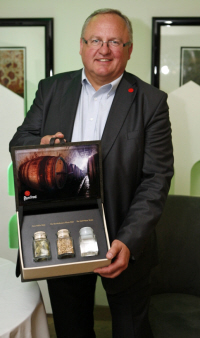
Groll’s successor, the effusive Václav Berka, displays Pilsner Urquell’s basic ingredients at the European Beer Bloggers Conference in Leeds, 2012. Pic: Pilsner Urquell.
So it’s not surprising to find Urquell on a charm offensive to win friends among the new generation of online opinion formers. The brewery has two strengths here. The first is effusive head brewer Václav Berka, one of those big personalities often encountered in the industry, bursting with enthusiasm for the beer he brews and oozing authenticity from every pore.
The second is the beer itself. Pilsner Urquell’s flagship 4.4% beer still tastes pretty good, particularly the unfiltered, unpasteurised version known in Czech as kvasnicový. Served by Václav himself at both EBBC events so far, complete with much ritualistic hammering of taps into wooden casks, this beer is sublime. Originally it was only available at the brewery and in a select handful of Czech pubs, with export markets receiving only the filtered and pasteurised version, but it’s gradually becoming more widely available, including to some specialist pubs in the UK.
Sadly these days no beer sells by its quality alone, particularly an international brand from a big brewery. Indeed the actual liquid itself is often a relatively minor part of the overall ‘brand proposition’. And Urquell seems to be generating ever more elaborate and more fanciful supporting narratives with which to surround the beer, riding roughshod over brewery history in the process.
In Leeds, we were briefed on aspects of this brand story. Amid lessons on correct pouring from Robert Kecskes, the current UK Pilsner Urquell Master Bartender (and although Robert was charming, I could write paragraphs about brands that attempt to create a mystique around the pouring process), and a talk on current production by Václav, we were treated to a monologue from ‘the Storyteller’, an actor with the sort of drama school-trained voice that can easily boom to the back row of the top tier at the Olivier and beyond.
The problem was that the story turned out to be a fairytale, presenting a romanticised and mythologised version of the beer’s history laced with pretty but unreliable details of the sort that send certain brewery historians into apoplexy. Thankfully the Brewed-By-Accident myth wasn’t retailed, but we were still told that Pilsner Urquell, the “world’s first golden beer”, is still brewed to the “same recipe” as Groll used in 1842, with malt from “nearby Moravia” and Žatec hops.

Pilsner Urquell UK Master Bartender 2011 Robert Kecskes with a traditional wooden barrel of the ‘Original source’, Leeds 2012. Pic: Pilsner Urquell.
It should be obvious from what I’ve written above that Urquell’s claim to be the first golden beer is shaky to say the least, as it’s likely beers of this colour were around in Britain long before. And claims about recipes unchanged for many years, although regularly made about particular beers keen to exhibit their heritage credentials, deny the practical realities of commercial brewing.
The “nearby” Southern Moravian barley growing region is well over 200km from Plzeň and even Žatec is 70km away – with transport back then, it’s likely more local ingredients were used. Indeed Evan Rail quotes sources that record the first barley for the brewery’s own maltings was simply bought at the weekly market in Plzeň.
The methods have certainly changed, most recently when SABMiller took over and modernised the brewery. Traditional open wooden fermenters were replaced with closed steel cylindroconicals and the old wooden barrels used for lagering were also exchanged for modern tanks, inevitably impacting on the behaviour of the house yeast.
One of the key features of lager beer brewing is lagering itself, when the beer is left to mature in tanks at near-freezing temperatures following primary fermentation. This process derives from the style’s roots in the old Bavarian practice of storing beer over the summer months in cold caves (lagern means ‘to store’ in German). During lagering, the beer stabilises and various chemicals that might otherwise taste harsh and unpleasant are slowly broken down, giving a cleaner and better integrated flavour.
But lagering times often come under pressure when breweries modernise and rationalise. To a management accountant, all that beer slumbering for months in the lagering hall looks like so many wads of cash locked away in a safe when they should be out there circulating and generating profits.
At EBBC, I asked Václav Berka how long the current beer is lagered for. He replied, rather cagily, that the total brewing time is now five weeks – the same period, he claimed, as in Groll’s day. This may be true, but at some point in its history the beer was lagered for much longer. When beer writers Michael Jackson and Roger Protz visited Urquell independently in the 1990s, they were both quoted lagering times of 70 days, whereas now that period, taking account of brewing and fermentation, looks closer to three weeks.
But do such things matter? Assuming you agree with me that beer is worthy of being treated as seriously as other products of human endeavour, you may still say that surely this was a light hearted presentation, not an article from a serious reference book or journal. The problem is that, given the current environment in which beer is discussed, myths about beer history have a habit of passing into folk knowledge and being quoted as fact in other contexts. Sure enough, within a few days of the event, some elements of the “history” were being repeated uncritically by beer bloggers.
I commented on one such post on Phil Hardy’s Beersay blog – I’m not singling Phil out but his was the one I had the time to respond to when I spotted it. My comment, interestingly, sparked a response from Vanessa Hollidge at Urquell’s PR agency in the UK, Gabrielle Shaw Communications. Vanessa wrote in an email:
You are correct in stating that in the case of Pilsner Urquell production methods have been modernised to deal with modern demand, but we can confirm that the recipe and taste remain extremely unaltered [my italics] from the original brew. This is done through the use of parallel brewing methods, where quantities of hop wort is [sic] regularly fermented and matured the traditional way in wooden vats and barrels for quality control and our brewers constantly test and compare to remain faithful to the original.
Also as a cautionary measure Pilsner Urquell has invited groups of independent experts to the brewery to conduct a full test analysis. For example, The Research Institute of Brewing and Malting PLC [at the Brewing Institute in Prague] has tested Pilsner Urquell from 1897 until present day and provided confirmation to the brewery in 2008 that the average analytical parameters of Pilsner Urquell remained practically identical to the parameters recorded in 1897. Exhaustive taste testing within the brewery itself also means knowledge is passed on.
I wrote back to Vanessa saying I was pleased that Pilsner Urquell took quality control seriously, and was especially interested to hear about the parallel test brews. It’s also good to have an admission that production methods have been modernised, though this contradicts the assertion that the recipe has remained unchanged.
The claim that the taste is “extremely unaltered”, though, reaches further heights of absurdity. Beer is a perishable product – it’ll even taste different if left to stand in a glass for half an hour – and flavour is one of the most challenging sensory experiences to record in an objective way that will allow meaningful comparisons across time. Today we have a more detailed, but still incomplete, understanding of both the chemistry and sensory aspects of flavour, and tasting panels trained to map flavours using a rigorous methodology, but even this is not flawless, and nothing like it existed 50 years ago, let alone 170.
Vanessa later sent me a copy of the declaration from the Brewing Institute, which confirms that basic parameters such as the original gravity (the proportion of fermentable sugars in the unfermented wort), attenuation (the extent to which these sugars are converted to alcohol during fermentation) and alcohol content of samples from the past 15 years correspond to those measured by the Chemical Research Institute in Plzeň and the Chemical Laboratory in St Gallen in 1897. This is interesting in itself, but says nothing even about bitterness levels, let alone the overall flavour.
The most important point, however, is that Pilsner Urquell shouldn’t need to pretend that nothing important has changed over the best part of two centuries. Beer ingredients, methods and flavours change for perfectly good reasons, to compensate for inevitable changes in quality, composition and availability of raw materials over time, to take advantage of improved technologies and ingredients, and because brewers believe they can brew better beers by changing what they do. Slavish recreations of obsolete brewing methods are of great interest to historians and archaeologists, but there’s no reason they should have a place in a working commercial brewery. If Pilsner Urquell today wasn’t a better and more consistent beer than it was in 1842, 170 years of development would have been in vain.
Indeed in a later email, Vanessa told me more realistically that “so as far as we can control and influence, we think [the beer is] as similar as it could be while producing on a decent scale.” This is indeed the best that any contemporary brewery could be expected to do with a heritage brew. But it opens up a new area of debate, as to whether or not ingredients and methods have been changed simply to reduce costs and increase profits when this impacts negatively on the beer’s quality and character.
This is the allegation longstanding Urquell drinkers make about the changes introduced by SABMiller. I don’t trust my taste memory enough to say they are right, but the claims sound plausible, particularly as regards the standard pasteurised product. Unfiltered, unpasteurised Pilsner Urquell today tastes like an excellent beer to me, though perhaps it might be even better if lagered longer.
As a final thought, if Josef Groll and the citizens of Plzeň had decided to stick to established practices, they would not have taken the leap of faith necessary to produce a beer that changed the face of brewing. When drinking Pilsner Urquell today, let’s celebrate their courage, foresight and innovative spirit, not muddy their achievement with fairy tales.



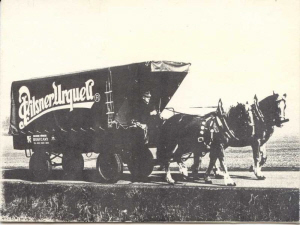
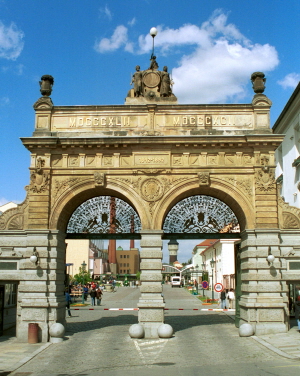
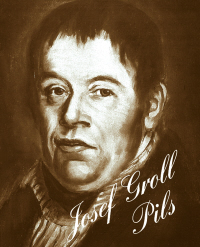
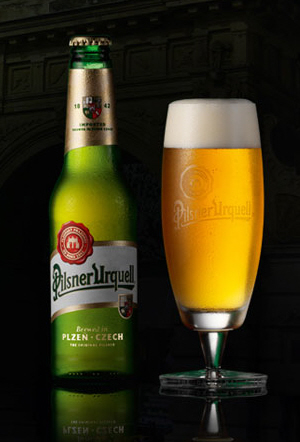


Excellent analysis, Des. As you say, the fact that the brewery was successful enough to inspire thousands of other brewers to imitate its product is reason enough to be proud, without frothing the story up.
Excellent read, and couldn’t agree more. It bothers me when I see the marketing of PU expecting me to believe that the beer is the same it was 160 years ago. It isn’t. They can show me all the lab analysis they want, but it just can’t taste the same.
On a side note. I’m still holding to the theory that the Burghers of Pilsen wanted to make a Pale Ale kind of thing, but knew they couldn’t do it the English way or they decided they’d do it the Bavarian way from the beginning as lagers were becoming increasingly popular in Bohemia.
Des, a nice post, and in general I agree. A few thoughts and observations:
the unfiltered, unpasteurised version known in Czech as kvasnicový.
Unfiltered lager is correctly called “nefiltrovaný,” while “kvasnicový” is one which has had fresh yeast added after fermentation. These are not the same thing.
He replied, rather cagily, that the total brewing time is now five weeks – the same period, he claimed, as in Groll’s day. This may be true…
This certainly seems to be true: one typical brewing period under Groll took just 37 days from grain to glass — and the beer was tapped and served on the morning of the 37th day. Today’s brewing period is perhaps two days shorter? That’s not a distinction that makes a difference, at least not for me, especially when you consider the differences in modern fermentation schedules, sanitation, yeast propagation, and so forth.
When beer writers Michael Jackson and Roger Protz visited Urquell independently in the 1990s, they were both quoted lagering times of 70 days, whereas now that period, taking account of brewing and fermentation, looks closer to three weeks.
That’s probably not right — for a Czech pale lager of 12 degrees, traditional primary fermentation na spilce can take just six days. With 35 days total, that still gives us 29 days for lagering, or just over four weeks. And primary fermentation in modern CCTs can take even less, perhaps five days, meaning our lagering period is more like 30 days — probably just as long as in Groll’s day, when primary fermentation probably took longer to complete.
Count me among those who don’t believe a shorter lagering period necessarily makes a big difference, an opinion that is shared by some of the most traditional of brewers here. Why? At one point, Pilsner Urquell had longer lagering periods, yes, but not coincidentally it also had serious sanitation problems, with the beer frequently going bad in just a few days: things were not always better way back when. Production of off-flavors (like excessive diacetyl), as well, used to be a more serious problem. But due to changes in sanitation, fermentation regimes and better yeast propagation, many of those old problems are gone. That’s a good thing.
As you note, the reason for long lagering is to reduce off-flavors in the beer. But if — through better brewing practices — you can produce fewer off-flavors to begin with, what is the point of a long period of lagering?
As for the “original recipe,” I understand what Pilsner Urquell is trying to say (they still use a triple decoction mash, Moravian barley, soft water, etc.), but there’s a bit of mythopoeia in there as well. For example, the use of hops from Žatec: according to the brewery’s own records, their original load of hops for the years 1842 and 1843 did not come from Žatec, but from the town of Mnichov, near Cheb — about 75 kilometers from Žatec, and not considered part of the area’s hop-growing region today. Is that a big deal? Not at all. But it does put the myth-making into perspective.
More interesting, I think, is the idea of the “original recipe.” In 1842, Groll originally brewed two different beers, at two different gravities. So which one is it?
As for this:
The most important point, however, is that Pilsner Urquell shouldn’t need to pretend that nothing important has changed over the best part of two centuries. Beer ingredients, methods and flavours change for perfectly good reasons. […] If Pilsner Urquell today wasn’t a better and more consistent beer than it was in 1842, 170 years of development would have been in vain.
Hear, hear!
Excellent reading!
While I am not on the rarified level of Jackson and Protz, just from my decade of living in the Czech Republic it was clear to me that Pilsner Urquell changed between 1999 and 2009. The most depressing thing of all from my perspective is that the kvasnicovy iteration of Urquell (so tempted to call kvasnicovy “real” Urquell) is light years ahead of the pasteurised stuff. Here in Charlottesville, VA, we have a little cabal of Czechs, Slovaks and former expats in those countries who regularly get together and whenever we do there is plenty of Pilsner Urquell that flows around the table, to the lament of the older generation of Czechs and Slovaks that “it used to be so much better” – I wonder though how much of that is pure nostalgia?
Having brought up Budvar in your post, it is instructive that (if I remember rightly and unless the new head brewer hasn’t tinkered with Mr Tolar’s standards) that a single batch of Budvar takes 102 days to make, 12 days in primary followed by 90 days lagering for their 12 degree beer. This makes sense as according to Ron Pattinson, the old tradition for lagering time was 1 week for each degree of Plato – by that definition even a 8 degree beer for the glass workers of northern Bohemia would be 2 months in the lagering tank. I am on the fence when it comes to lagering times, giving the living nature of beer, it is ready when it is ready, whether that is 3 weeks or 10.
interesting point about lagering. I am all for time and beer sleeping the sleep of the just, but a couple of years ago at Dobrany brewery near Pilsen I recall the brewery tapping some beer for us, a 16˚Amber according to my notes, and it was gorgeous, full and bitter and smooth, how long has this been lagering I asked Petr the brewmaster, three days he said…nice to have preconceptions challenged sometimes.
[…] You can measure a beer’s attributes and replicate them and declare it ‘technically the same’; and you can categorise a beer and brew something which matches the ‘profile for the style’; but it’s the sometimes barely perceptible contributions from people, process, place and ingredients that make it what it is. […]
ATJ, I think it all depends on the beer. At Bělec nad Orlíci the brewer let me taste from a batch that had been lagering for two weeks and another that had been lagering for 90 days. The older one was considerably better, but truth be told, it’s hard to say how much better than a, say, month old beer it would have been…
I enjoyed pulling up one of my papers (“Prevailing Pilsner”) for The Brewer International published over 10 years ago on this topic; “Kleber describes the old Pilsner fermentation in the original “Burgerliches Brauhaus” of Pilsen (to the locals, Mestansky Pivovar or “Citizens’ Brewery”) as using a new style of bottom-fermentation yeast, and that previously, all yeast in Pilsen brewing was of the top-fermenting variety (16). Primary fermentation required 12 days, allowed three weeks for secondary (residual) fermentation in smaller casks, and then filled with kräusen and closed…and allowed to lager for three months. In 1992 the brewery completely modernized with new stainless steel tanks and changed protocols to its current world-standard efficient production.There probably is one Pilsner beer yeast which originated from a Munich brewery circa 1840’s, and which can ferment at very cold temperatures which required longer time in fermentation, but which yielded smoother, softer flavours, and that is now found only in Plzn, Czech Republic. Some citations indicate that at one time, the Plzen brewery made its beer by a unique blend of four distinct batches, each brewed with a particular yeast strain (17). If this is accurate (and it may not be), then those of us who manage more than one yeast strain in the brewery might have to reflect on how much more difficult that management would have been over 100 years ago. One citation of multi-yeast strains states that the practice ended quite recently, and offers that the fermentation temperature is 4 deg C, with a high (diacetyl rest) temperature achieved of 9 deg C (18).”
In my “Table 2: Pilsner Urquell studied in the brewery lab” , I compared a full analysis performed by the Corporate Brewing Lab at Schlitz in 1959 with identical 2001 analyses I had run by Mike Dominighini at BrewLab in Portland, which subsequently rolled into Widmer QA lab. Differences existed with OG dropping as well as IBU as found in 2001, compared with 1959. Just because the bitterness and OG dropped a bit (5 IBU’s if I recall correctly…I’d have to dig up the article!) I think it just reflected how things change over time as brewers try to satisfy their customers at any given time.
And I cited my publication sources, but they weren’t very well cited in themselves with their sources!
Nice piece, Des.
I’ve a memory of reading that the recipe now includes corn syrup. Can anyone confirm or deny that?
No it doesn’t, Staropramen’s recipe does, though…
“This certainly seems to be true: one typical brewing period under Groll took just 37 days from grain to glass — and the beer was tapped and served on the morning of the 37th day. ” But was this Sommerbier or Winterbier? There was a big difference in the lagering times of the two. You have to make sure you’re comparing like with like. Modern Urquell is surely the descendent of the longer lagered Sommerbier.
[…] Met welk bier kunnen we beter beginnen dan met Pilsener Urquell. Het eerste pils ooit. Gebrouwen in, waar kan het ook anders, Plzen. Met dit bier begon pils als de bierstijl die nu de hele wereld heeft veroverd. Overigens valt er op dit verhaal heel wat af te dingen. Zie voor een hele uitgebreide analyse de post van onze collega-blogger Des de Moor. […]